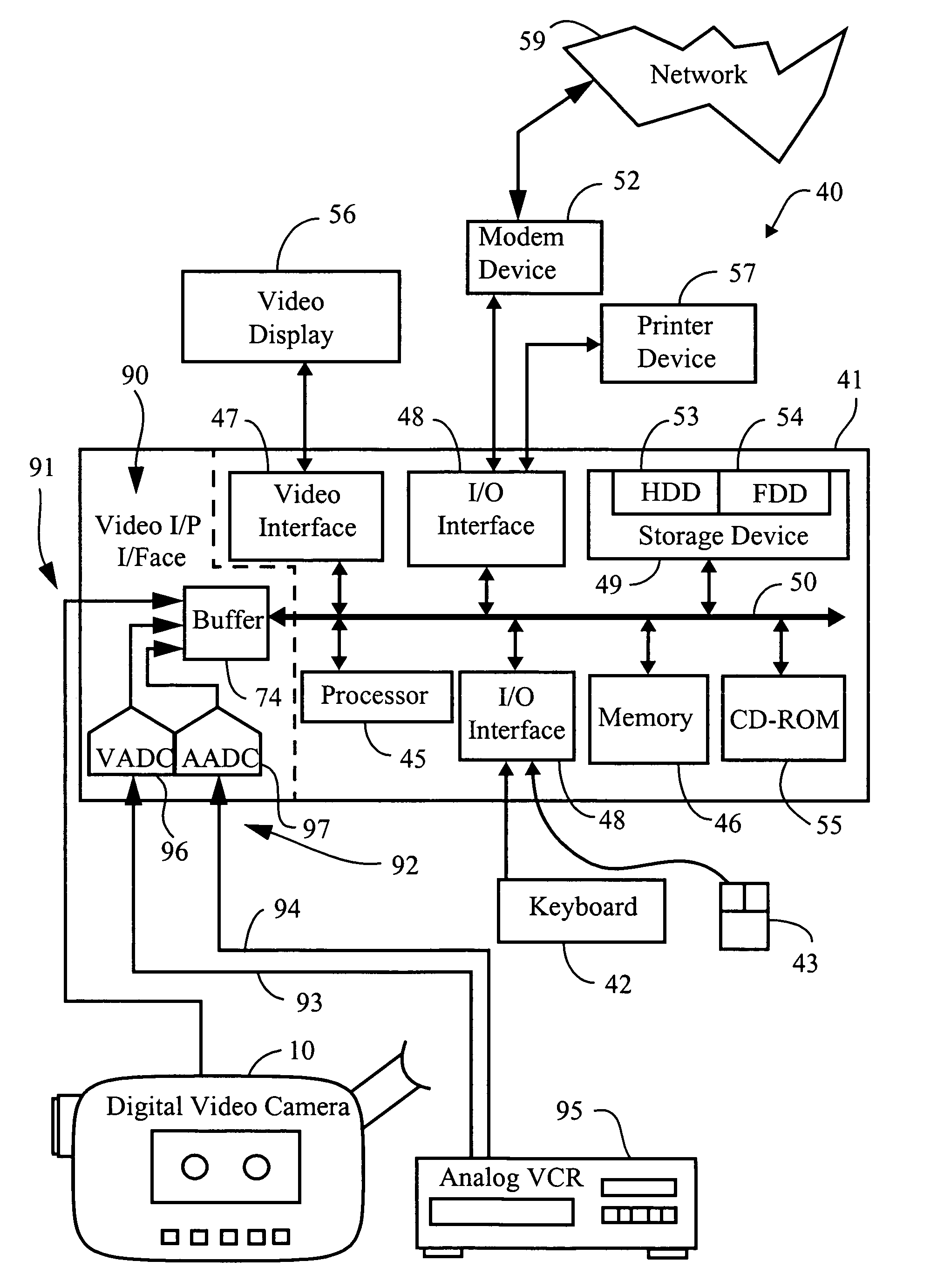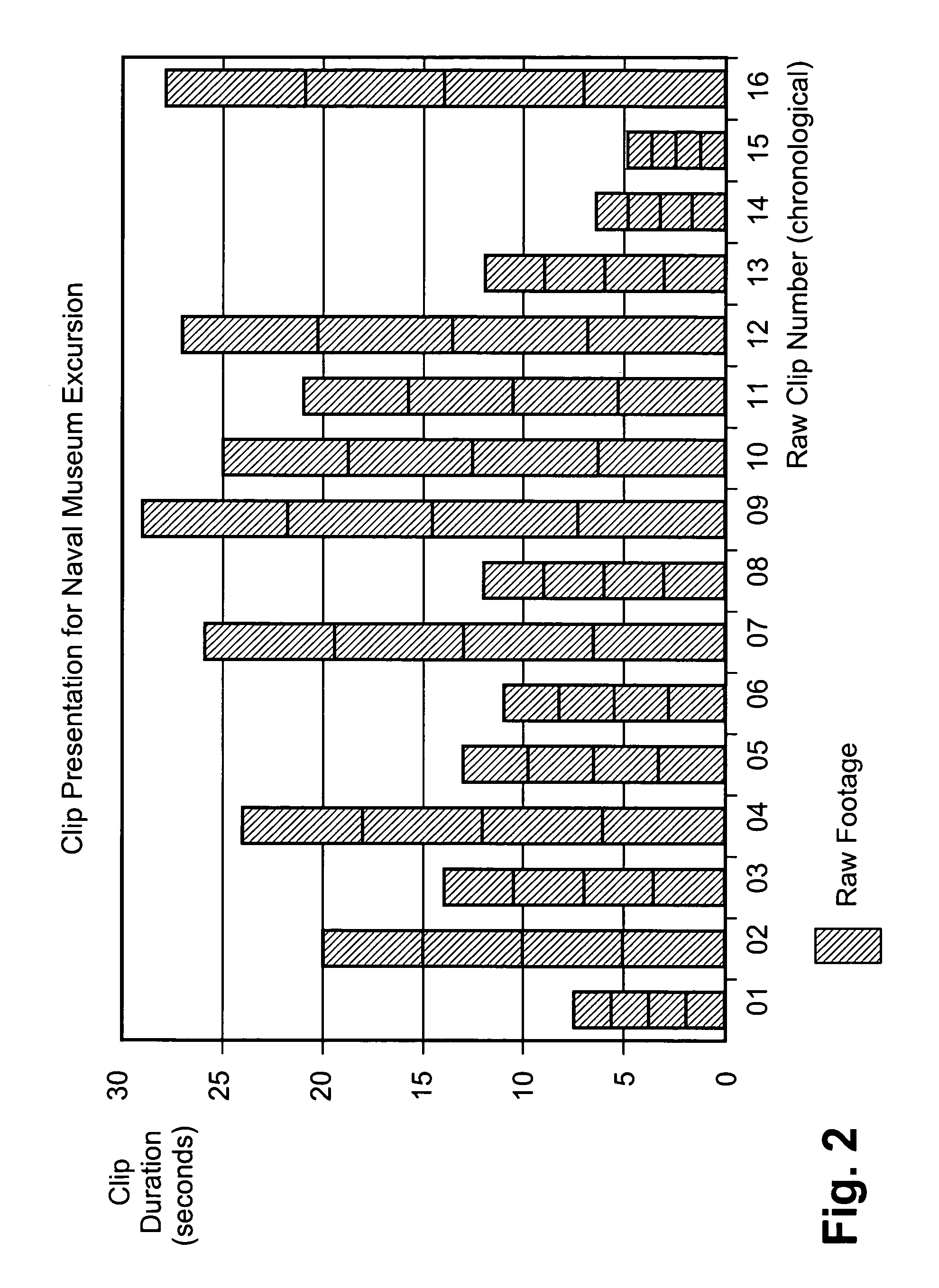Automated visual image editing system
an image editing and automatic technology, applied in the field of motion picture footage editing, can solve the problems of lack of interest, waning interest of non-participant audiences, and rare time and expertise of amateur video makers, and achieve the effect of slowing down the pa
- Summary
- Abstract
- Description
- Claims
- Application Information
AI Technical Summary
Benefits of technology
Problems solved by technology
Method used
Image
Examples
example 3
Music Video Clip
(i) Sequence:
[0101]The sequence in this example is dependent on the audio beat, since generally the video is intended to complement the audio, not vice versa (as it sometimes may appear). For example, for music with less than 100 beats per minute, the 10-4 sequence is used as a basis. For beats equal to or exceeding 100 beats per minute, an 8-3 basis sequence can be used. In each case the actual clip intervals are adjusted to permit substantial beat synchronisation. For example, with music at 96 beats / minute gives 1.6 beats / second, the footage may be cut in a sequence of 10 seconds and 3.76 seconds thereby approximating 16 and 6 beats respectively and providing perceptual synchronism.
(ii) Transitions:
[0102]General four frame cross fade between each clip.
(iii) Duration:
[0103]Duration of the cut sequence is forced to map to audio track duration. This is not recommended for tracks longer than six minutes.
(iv) Cutting Rule:
[0104](a) Cut in chronological order.
[0105](b) R...
example 4
Quick Look Template
[0114]The Quick Look template provides the user with a short running preview of all of the footage that may be presented within raw video content. The Quick Look template provides the preview within a designated default time period, for example 30 seconds, or to a time period specified by the user. The rhythmic editing sequence is applied to accommodate the original raw footage of a duration many times longer than the predetermined time period (30 seconds) by cutting clips to short durations of only frames in length. Clip speed may be altered in the range 100-600% for example and cut durations may range from a few frames to a few seconds. A variety of Quick Look templates may be formed as desired.
example 1
Quick Look Example 1
[0115]Clips may be cut into segments of ten frames and four frames in a fashion corresponding to the 10-4 rule mentioned above. In order to present more footage into these short durations, the footage is stretched sometimes up to 300% of the original play speed, and in some cases, the frame rate of the original footage is reduced. For example, using the arrangement shown in FIG. 3 where it was indicated that 176 seconds of standard edited clips were derived using the 10-4 second rule, those same clips may be processed to extract ten and four frame segments from each clip giving 176 frames for reproduction. At a frame rate of, say, 25 frames per second as used in the PAL reproduction system, this equates to approximately 7 seconds of replay time. According to the Quick Look implementation, selected ones of the four and ten frame segments, or alternatively their entirety, are stretched to achieve the 30 second preview time. The user can select longer “preview” of t...
PUM
 Login to View More
Login to View More Abstract
Description
Claims
Application Information
 Login to View More
Login to View More - R&D
- Intellectual Property
- Life Sciences
- Materials
- Tech Scout
- Unparalleled Data Quality
- Higher Quality Content
- 60% Fewer Hallucinations
Browse by: Latest US Patents, China's latest patents, Technical Efficacy Thesaurus, Application Domain, Technology Topic, Popular Technical Reports.
© 2025 PatSnap. All rights reserved.Legal|Privacy policy|Modern Slavery Act Transparency Statement|Sitemap|About US| Contact US: help@patsnap.com



